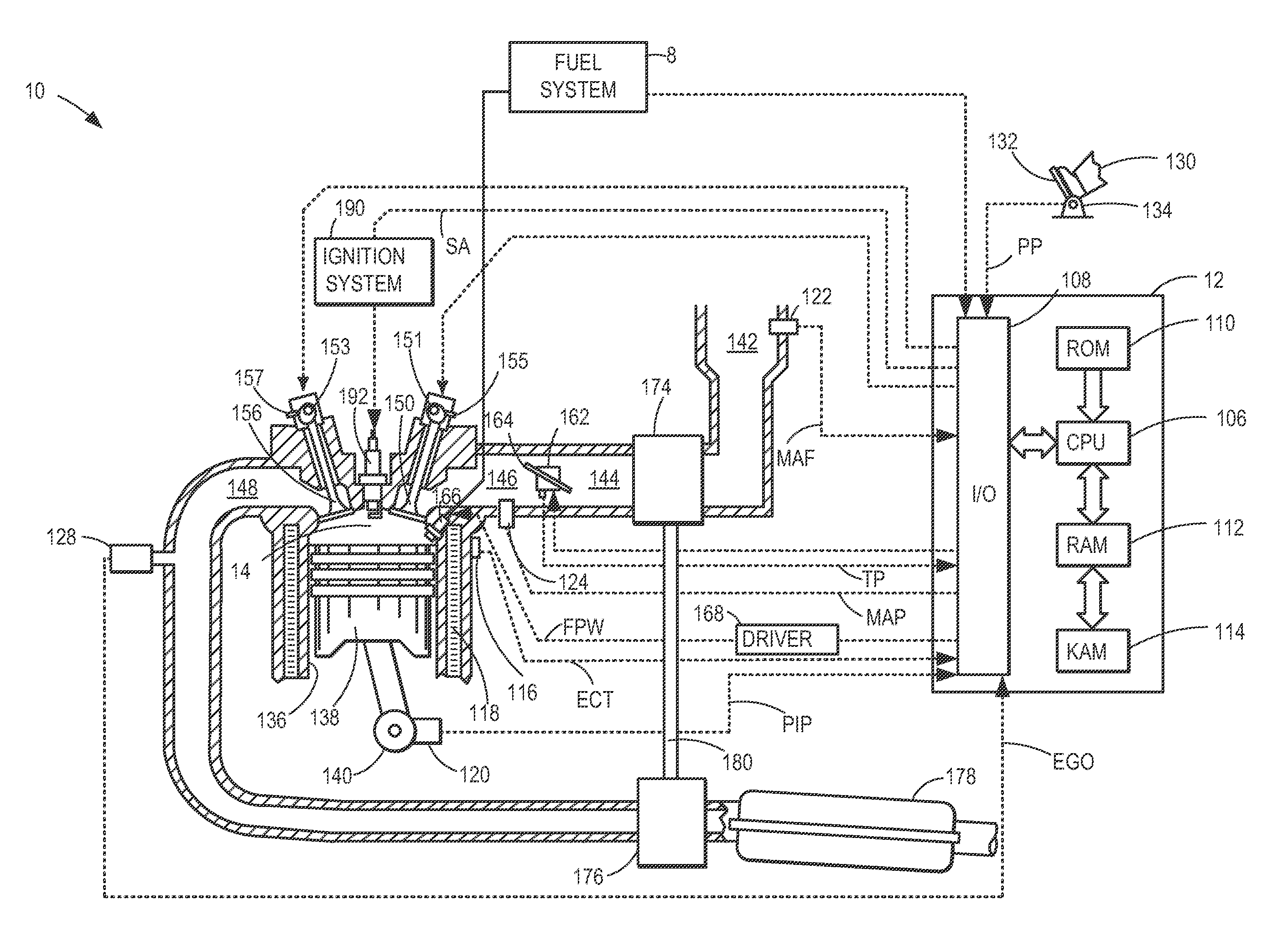Method and system for engine control
a technology of engine control and engine start, applied in the direction of electric control, engine starters, instruments, etc., can solve the problem that the operator may expect a longer starting time, and achieve the effect of reducing vehicle noise, fuel saving, and reducing exhaust emissions
- Summary
- Abstract
- Description
- Claims
- Application Information
AI Technical Summary
Benefits of technology
Problems solved by technology
Method used
Image
Examples
Embodiment Construction
[0017]The following description relates to systems and methods for engine systems configured to be automatically deactivated in response to selected idle-stop conditions, such as the engine system of FIGS. 1-2. Specifically, engine stopping and start may be improved by reducing shutdown shake experienced during an engine shutdown, and reducing engine speed flare during a subsequent engine restart. An engine controller may be configured to perform control routines, such as those depicted in FIGS. 3-4, during an engine idle-stop and / or restart operation, to adjust a cylinder valve timing for improved compression heating and to provide an anticipated cylinder air charge, based on whether an engine shutdown is deliberately performed, in response to an operator request, or automatically performed, in response to idle-stop conditions. Specifically, a cam timing device may be operated to preposition the valve timing during an engine shutdown based the origin of the engine stop request. In ...
PUM
 Login to View More
Login to View More Abstract
Description
Claims
Application Information
 Login to View More
Login to View More - R&D
- Intellectual Property
- Life Sciences
- Materials
- Tech Scout
- Unparalleled Data Quality
- Higher Quality Content
- 60% Fewer Hallucinations
Browse by: Latest US Patents, China's latest patents, Technical Efficacy Thesaurus, Application Domain, Technology Topic, Popular Technical Reports.
© 2025 PatSnap. All rights reserved.Legal|Privacy policy|Modern Slavery Act Transparency Statement|Sitemap|About US| Contact US: help@patsnap.com



